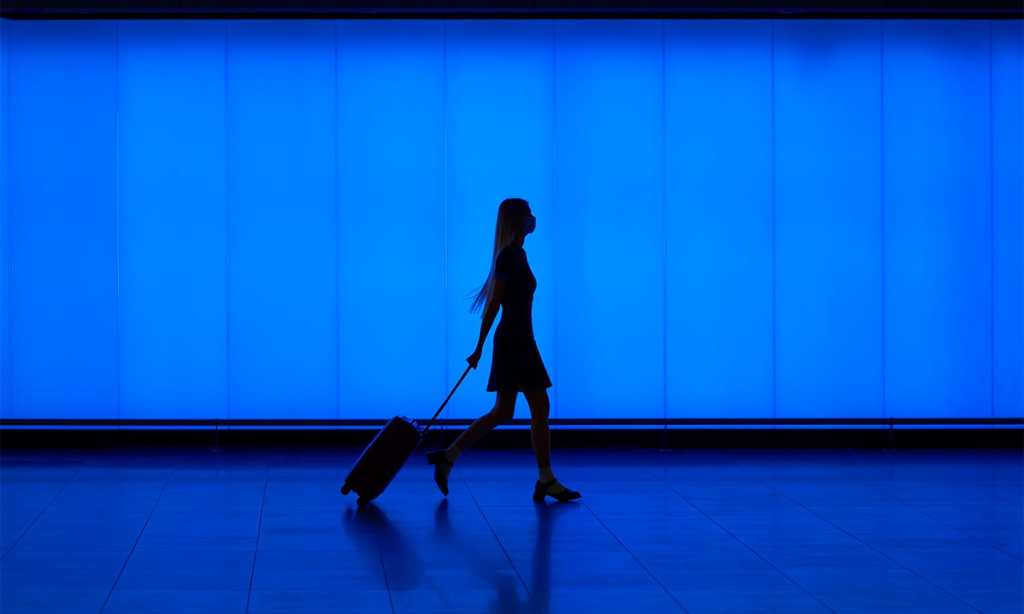Australia is gearing up for a major post-COVID summer, with restrictions lifting across the country as we approach key vaccination milestones.
One of the biggest hurdles in getting the country back to pre-pandemic levels of normality is the re-opening of international borders, shut over 18 months ago in March of 2020.
Last week, Prime Minister Scott Morrison announced that international borders would reopen for states that have reached the 80 per cent double dose target in November, although there is no clear date as to when that might be.
In order to re-open however, airlines and governments are going to have to work together to overcome a number of key issues. Namely, quarantine, vaccine passports, and passenger caps.
Australia still has in place the requirement for returning travellers to spend two weeks in a hotel at their own expense and, while NSW and SA are trialling seven day home quarantine measures, it’s not yet known how this will work in practice, with issues around compliance and contact tracing still up in the air.
Vaccine passports too are a key problem as airlines have yet to figure out how to parse out vaccinated travellers from non vaccinated travellers since their booking systems don’t incorporate medical certificates.
Finally, the caps on international weekly arrivals, currently down to just 3000 across the country, will need to be lifted if airlines are going to have the capacity to operate economically. Until they get work of what those updated caps will be, they are unlikely to restart their fleets in full.
All of the above, plus a myriad of other minor issues, is why international travel is unlikely to return to normal any time soon, even when borders reopen.
It’s Not Getting Out That’s The Problem, It’s Getting In
When The Latch called travel agency Flight Centre to enquire about flights from Sydney to London, we were told that getting out of Australia is not the issue, it’s getting back in.
While outbound flights are relatively available, returning flights are still incredibly limited, with many international airlines unlikely to boost their numbers until they have absolute clarity and certainty from the government that customers will be able to fly in and out without an issue.
Morrison has recently announced that international tourism would not resume in Australia until next year, with Australian citizens and permanent residents as the key initial focus.
This is unlikely to motivate international airlines to resume their pre-COVID flight capacities.
While domestic airlines like Qantas have announced that they would be restarting international flights from highly-vaccinated states a month earlier than planned, they are still only able to offer a few flights per week to major cities.
The financial aspect is a big factor in returning to the skies. Those flights are already far more expensive than what we have become accustomed to, with Flight Centre quoting just under $5000 for a return from Sydney to London.
Granted, that flight was at peak season over Christmas, when flights are expected to be at their most expensive, but part of the reason is also due to the fact that most international airlines cant guarantee a return as they have had to bump off passengers routinely throughout the pandemic to accommodate the return traveller caps.
Only Qantas is likely to be able to guarantee a return without the possibility of getting stuck somewhere like Singapore during a layover, Flight Centre said, and their flights are currently the most expensive.
According to the flight comparison site Skyscanner, outbound economy flights from Sydney to London are available for about $760 in late November, rising to around $1600 in December, but the return flights are far pricier. A return in November will set you back around $2200 while a December return will cost almost $3000.
Aviation analyst Neil Hansford told the ABC that we shouldn’t expect the kind of pre-pandemic deals that we might normally have seen pre-pandemic and that international travel will be quite expensive for some time.
“I’d suggest there will be a big rush for December to make Christmas, but come January and February it will settle down as more and more capacity becomes available,” Hansford said.
This applies of course only to highly-vaccinated states and Australian citizens and permanent residents. Those on temporary visas will be unlikely to be allowed to travel until next year, in alignment with Morrison’s recent update, and state’s like WA and TAS are planning to keep borders closed for significantly longer than the rest of the country.
WA Premier Mark McGowan told reporters recently that his state will remain closed for some time, even after it passes the 80% benchmark.
“With NSW having very high levels of infection … the view is if people from NSW want to fly overseas and come back, they’re really not adding to the risk. We’re not going to do this at this point in time,” he said.
Tasmanian Premier Peter Gutwein is also planning to keep state borders closed until the apple aisle reaches 90% full vaccination.
Given all of the above, while international travel is incredibly attractive for a country with almost 50% of its population born overseas or with one immigrant parent, it could still be some time until things settle down to any reasonable level for travelling.
Read more stories from The Latch and subscribe to our email newsletter.







